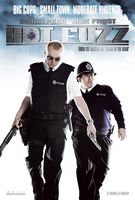
Hot Fuzz is an action comedy which follows PC Nicholas Angel’s transfer from the London Metropolitan Police to rural Sandford, where he discovers a string of murders have been committed. Despite being overly violent at times, the film maintains a light-hearted tone through the use of comic conventions, such as the urbane character being a fish out of water in the topsy-turvy world of the country, a plot device used in texts as early as Shakespeare’s As You Like It, as well as the novels of P.G. Wodehouse.
Before the film’s main action, the plot focuses on PC Angel’s attempt to adapt to rural life. Over comical background music, the film presents a montage of humorous incidents at Angel’s expense. During this sequence, PC Angel receives a phone call from Mr Peter Ian Staker, informing him that ‘the swan’s escaped’ from ‘the castle’.[1] Due to the absurdity of this event, and the name of the caller (which Angel shortens to P. I. Staker, or Piss Taker) Angel angrily assumes this to be a prank phone call and hangs up.[2]
The audience learns the PC’s mistake when the next scene cuts to Angel interviewing Mr Staker outside the castle. The comical background music has cut out, framing the incident as serious, whilst the diegetic sound of birds can be heard in the distance, reinforcing the idea that birds live in the castle without them being shown onscreen. The use of over-seriousness in this scene becomes ironic, particularly as it contrasts the excessively comic scenes which precede and follow it. Another moment of comedy occurs as Angel asks Staker to describe the bird as if a suspect, information which becomes redundant with Staker’s statement ‘Well, it’s a swan’.[3] Here, the portrayal of PC Angel as a rational character is subverted, with his questions being ridiculous. This additionally contributes to the characterisation of Angel as someone who cannot take a joke, treating the incident with an inappropriate level of severity. Furthermore, the contrast between the seriousness of the interview and the amusing content of Staker’s response appears to mock police practices as pointless exercises, especially given that no new information is given about the swan’s appearance. The use of a swan, rather than a larger or more stereotypically dangerous animal also adds to the ridiculousness of the scene, as many would consider a swan escape as a minor incident, especially given that the majority of swans are wild/free animals. This also demonstrates the perceived lack of crime in Sandford, the police responding to even small incidents. However, the swan’s escape, as well as the police involvement, does frame the animal as a runaway criminal, fleeing the prison-like castle. The criminalisation of the swan is again absurd, the PC almost failing to recognise that the swan is in fact an animal. The fact that it is ‘the swan’ rather than ‘a swan’ which has escaped further establishes the swan as an individual character rather than just a random/unknown animal, possibly with a reputation within the town. This scene additionally adds to the establishment of the rural setting of the film, with birds causing havoc a relatively commonplace incident in the countryside, but an unlikely occurrence in the city.
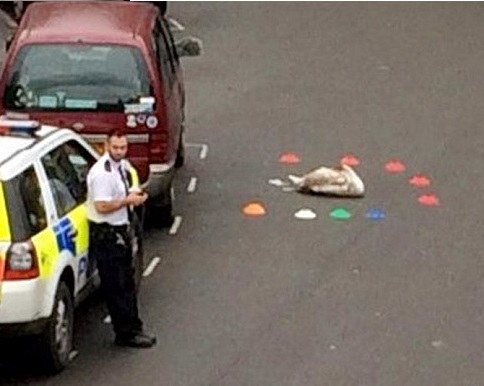
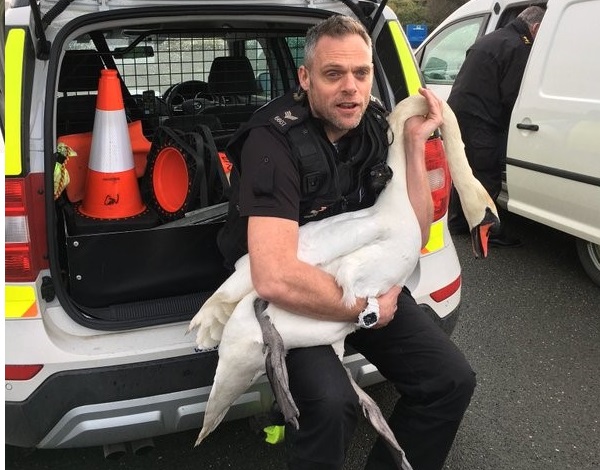
A common occurrence in rural towns: real life incidents of swans being caught by police. Images from The Telegraph (left) and The Plymouth Herald (right).
This scene is followed by a montage of PC Angel and his sidekick, PC Butterman, trying to capture the escaped swan. The montage features the same comedic background music as the earlier scene, again creating a light-hearted tone. In attempting to lure the swan closer, Butterman imitates the swan’s honking noise, as if trying to communicate with the bird. This noise itself is comedic, honking often associated with clowns or clown cars. In Butterman’s mimicry of the swan, he similarly becomes animalistic and chaotic, seeming to worsen the situation rather than resolve it. This further contributes to the characterisation of Butterman as childish and incompetent, imitating animal sounds being an action connected with childhood and play. Despite Angel viewing Butterman’s actions as ridiculous, the swan seems to honk in response to his call, however this is portrayed as an aggressive action rather the one which creates an understanding. Here, the swan begins running and flapping its wings with an air of hostility, contrasting stereotypes of swans as graceful or peaceful animals. In this scene, humans and animals are viewed in opposition to each other, the swan’s apparent want for freedom contrasting the police officers, whose aim is to capture and restrain the animal. Although swans are not considered as dangerous, the ferocity and speed of the bird causes the police officers to become overwhelmed. This is another source of irony in the film, as although PC Angel is a high-achieving police officer, who has dealt with dangerous London criminals, he is unable to catch a relatively harmless animal which poses no serious threat, reducing his authority and levelling him with the other Sandford police officers.
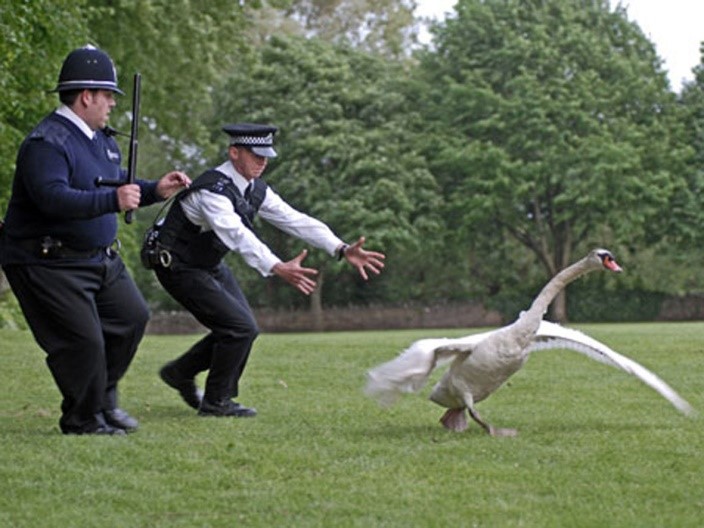
A failed attempt: PC Angel may be able to handle dangerous criminals, but is incapable of catching the escaped swan.
The swan reappears in the film’s climactic car chase scene. Sitting in the middle of the road, the swan forces the car containing the film’s antagonists to swerve, causing them to crash into the model village, whilst the pursuing car, containing PCs Angel and Butterman stops to pick up the swan, which humorously joins them on the chase. In contract to the earlier scenes, the swan now appears to be acting with the police officers rather than against them, not resisting capture and positioning itself between the pair, as if one of them. Again, this creates comedy through the juxtaposition of the intense high-speed chase and the absurdity of the swan (an animal earlier established as a comic figure) acting as a police officer. This is epitomised by the swan’s quiet honking over the sound of sirens, one of the ways in which the film combines the genres of action and comedy. Both actions of the film’s heroes and the film’s villains show a care for the swan, as either driver could have run the swan down or simply ignored it, indicating that although the characters are willing to kill each other, they are not willing to harm the swan, proving the animal’s value. At the end of this scene, the film’s main villain, Inspector Butterman (PC Butterman’s father), attempts to flee in the hero’s car, in which, unknown to him, the swan remains. In an unexpected comedic twist, the swan bites the Inspector, causing him to crash, the swan’s aggressive nature now working in favour of the PCs Angel and Butterman. In not allowing Inspector Butterman to get away, the swan becomes one of the film’s heroes, again acting alongside the protagonists. In this way, the swan is also an important plot device, as it allows the heroes to become triumphant in capturing the villains at the film’s close.
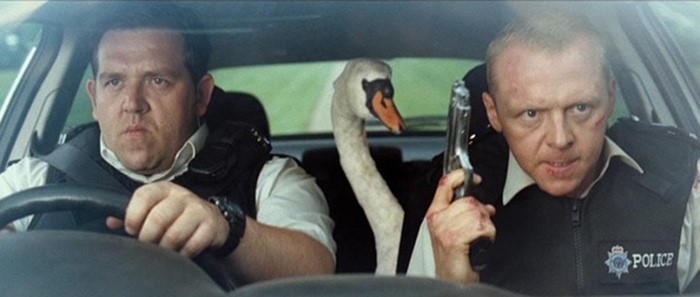
Backseat driver: the swan joins the heroes on the chase, now indifferent towards being captured.
[1] Hot Fuzz. Dir Edgar Wright. Universal Picture/Rogue Pictures, 2007.
[2] Hot Fuzz.
[3] Hot Fuzz.